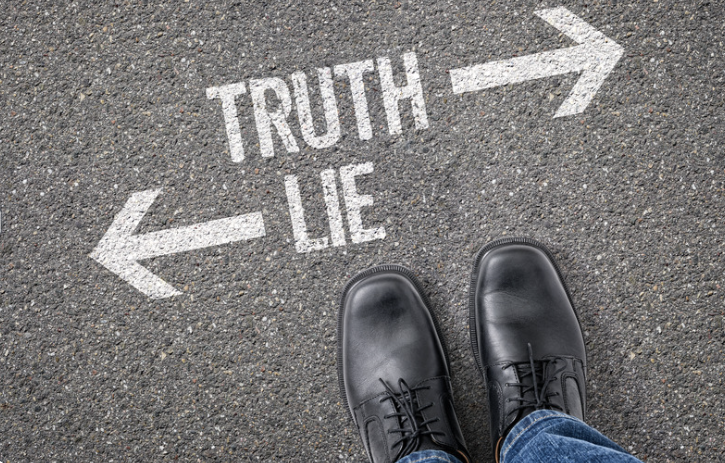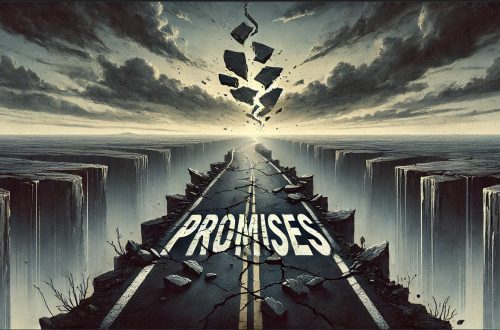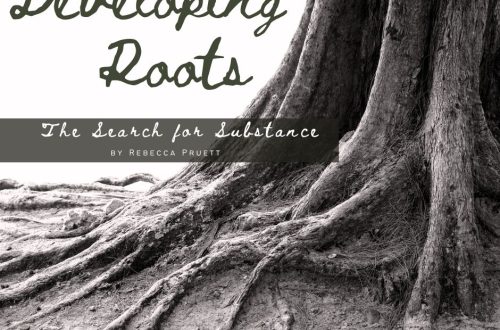
Healing or Hype? Exposing Miracle Culture
Today, January 19, is my dad’s birthday. Every year, this day brings a mix of emotions—gratitude for the man he was, sadness that he’s no longer here, and a deep sense of regret for the role I played in the final weeks of his life.
I realize that God has forgiven me, but this story is one I feel I must share because it highlights the subversive culture of false miracles within the Faith Movement and charismatic circles.
This is the article I thought I’d never be able to write. It’s one that requires vulnerability and honesty, but also one that I believe is necessary for others to understand the truth behind what so often passes as miraculous.
I faked a healing.
It hurts just to type it out—it’s a fact that has haunted me for several years.
There isn’t a moment in my entire life that I regret more than this, because this was the moment I distorted the Gospel for the people I love the most in the time they needed it the most—especially my unsaved father.
This is what happened.
In 2015, I developed a blood clot in my brain (Cerebral Venous Sinus Thrombosis). When one of these forms, blood is blocked from flowing out of your brain. As the blood builds, pressure increases, causing damage to surrounding areas. One of the affected areas was an optic nerve and the part of the brain that interprets vision, leaving me with blurry and distorted vision in my left eye. While I could still see, it was far from optimal. Interestingly, my vision fluctuated based on stress and fatigue. Stress made it worse, while adrenaline made it clearer. This strange quirk is pivotal in the story I am about to tell.
In 2019, a healing minister learned about the residual problem I had with my eye and insisted on praying for me.
I grew up in Pentecostalism so I was familiar with the process of going up for prayer at the end of a service, a small group huddling around to lay hands on you, and then moving on in a simple manner.
This was entirely different. This was not during a service, but during casual fellowship. It was sudden, it was spontaneous, and it was clear that failure was not an option for him. We were new to his circle, and he had been chasing every miracle he could to demonstrate to us that they lived in an environment of ubiquitous miracles. Miracles were their entire life. This was an opportunity to prove it, and he jumped fast.
I have never been a person that enjoys being the center of attention, so this was an uncomfortable scenario for me, and several things were racing through my mind—namely escape.
The group prayed for my eye and the preacher asked if it was healed.
I was completely caught off guard by this. It wasn’t something I was familiar with. No one had ever asked me whether I was healed on the very spot after receiving prayer.
These individuals weren’t just praying for me though—they were fully expecting an instantaneous miracle.
I answered awkwardly, “No…”
They prayed again.
He asked again.
“How about now?”
Embarrassed, I admitted that it wasn’t.
The preacher then gave an exhortation to the group that when we’re praying for healing, “faith” latches on to the positive. It “looks for evidence.”
He prayed again with these instructions. “If you notice a change, don’t explain it away to yourself!”
At this point, I began to panic. I felt trapped. I am about as introverted as a person can get, and I was despairingly uncomfortable. Adrenaline surged. I wanted out of the situation. I wanted everyone to stop paying attention to me. I wanted them to move on.
They prayed one more time, and of course, with that rush of adrenaline, my vision got clearer in that moment. My mind was so rattled though… I thought, if I try to explain why—that adrenaline affects it—they’ll say it’s not faith…
In hindsight, I know I should have answered honestly and thoroughly and let them say and do whatever they were going to say and do. I should have let them be responsible for themselves.
Instead, I buckled under the pressure.
When the preacher asked again, “It’s better now! Isn’t it?”
I blurted, in a panic, “Ye… Yes.” There wasn’t space to say more, because everyone instantly exploded with joyous praise and applause. I wanted to explain, but I was also so desperate to be out of the situation. On top of that, explaining it away, when he just said not to, seemed like such a humiliating route to take. I regretted my silence immediately, but I secretly hoped, with all my might, that everything would blow over and people would move on.
That is not what happened though.
The preacher left the room and started going from group to group, telling people about the healing—except he didn’t call it a “blurry eye” like I had.
I heard him say confidently to others, “God healed a BLINDED EYE!”
Over and over I heard him say it– “A BLINDED EYE! A BLINDED EYE!”
I was horrified, but I didn’t know what to do.
I made several attempts to clarify that I never said it was a “blinded eye” and to downplay what took place, but it wasn’t enough.
The story snowballed.
The story quickly spread across the country, bolstering the preacher’s credibility and prompting many—including those who had previously been cautious of his doctrine—to place their confidence in his teachings. The excitement was contagious, and even members of my own family were drawn under his influence as a result.
In the weeks that followed, I was sucked into a cyclone of exploitation. The preacher frequently called on me to testify about this “healing,” whether in front of the congregation or to groups of people on the street. Because I was seen as the recipient of a miracle, I was then expected to pray for others to receive their own healings—everything hinging on the “faith” stirred up in people by the testimony of my supposed healing.
Every time I was asked to tell the story and pray for someone, I felt like Ananias and Saphira. When I tried to express my concerns, I was met with a plethora of disorienting teachings on positive confession. “Don’t let the devil talk you out of your healing!” “You have evidence! Stand in faith! “The distress you feel is the devil attacking you!” My mind became a maelstrom of utter confusion. Was I healed? Was I not healed? Is it evidence? If I say it wasn’t, I’m not standing in faith… I have to say I’m healed? But isn’t this a lie? Speak in faith? It was an exaggeration. Exaggeration is a lie. But they say it’s not. It’s a confident declaration.
How badly I wish I had been totally and completely honest with people.
The fact is, I wasn’t. I was cowardly.
In my shame, humiliation, and embarrassment, I allowed myself to be pulled along and used, while I privately agonized.
That, however, is not the worst of it.
The very week this happened, unbeknownst to me, my unsaved Dad was diagnosed with terminal cancer.
He learned about this “healing” right on the heels of that diagnosis.
It gave him false hope.
It gave him confidence in a false teacher.
He thought, if God did it for his little girl, maybe God would do it for him.
I can’t express the torture my mind went through as an intense “battle of faith” for my father’s life ensued. I was ensnared by the teachings. If I level with him, it will “impact his faith.” If I don’t tell him, his confidence may be misplaced.
I was tormented inside over thoughts of false hope, counterfeits, and lies… but paralyzed at the same time, by teachings that demanded I only speak and act positively.
To my deepest shame, I never leveled with my Dad.
I doubled down.
I chose to “stand in faith”.
I crammed every concern and objection within me far down and out of sight. I shut my mind off to everything that would deter the notion that my Dad would be healed (including my own lies). I silenced every shred of common sense, logic, reason, conscience, doubt, and warning that came my way. I absolutely mastered discipline of the mind, totally crippling my ability to think critically.
I poured every fiber of my being into becoming a “woman of great faith” in some strange, distorted hope that I could prove to God that I wasn’t a liar.
Dad died 11 weeks later.
I misrepresented Christ.
I marred His name.
I mangled the Gospel to my dying father.
There is nothing I regret more than this.
Incredibly, despite my atrocious failures, my father prayed to receive salvation before he passed away. I can’t express how gracious God was in this. His Gospel was far more powerful than my lie, and by the grace and mercy of God, my father is with Christ today.
About a year and a half later, the Lord graciously saved me, using this experience to open my eyes to the eternal difference between the counterfeit Christianity I had embraced and the legitimate Gospel of Jesus Christ.
Why Share This?
Sharing this story is not easy, but it’s necessary to help others understand the illusion of the supernatural within the Faith Movement. Experiences of this nature reveal a host of dynamics that create a “culture of miracles” without actual miracles taking place.
1. Adrenaline and Temporary Effects
Emotions run high during faith-healing events. The music, the crowd, the expectation, the energy—all of it creates an environment ripe for adrenaline surges. These physiological changes can temporarily alleviate or mask symptoms—long enough to say and proclaim a healing has taken place. However, the effects are fleeting and do not reflect true healing.
2. Vague and Subjective Assessments
Faith healing often relies on subjective assessments, rather than objective evidence. For example, someone with chronic pain might be asked to rate their pain before and after prayer. In the emotional intensity of the moment, they may genuinely feel less pain or be eager to give a positive report. Miracles in Scripture, however, were undeniable: the blind saw (John 9:6-7), the lame walked (Acts 3:6-8), and the dead were raised (John 11:43-44). These miracles were verifiable, not based on vague claims of improvement.
3. High-Pressure Moments and Fear of Embarrassment
The culture of these services often leaves no room for failure. Admitting that healing hasn’t occurred can feel like a group or personal failure. In these moments, individuals might feel compelled to say they’ve been healed, even if they haven’t, to avoid disappointing the group, or appearing to lack faith.
4. Exaggeration
Some healing testimonies grow more dramatic with retelling. The more sensational a story is, the more exciting it is to tell. What begins as a “mild improvement” can escalate into a full-blown miracle as the story is passed along.
5. Exploitation
Faith healers may exploit vulnerable individuals, twisting their experiences into something more sensational to draw attention to themselves or gain credibility.
6. Fabrication
The possibility of fabricated ailments with fabricated healings shouldn’t be dismissed. Fabricated healing may be a means to gain attention.
7. Desperation
Desperation abounds where healing is sought. A person may yearn so badly for healing for themselves or a loved one, that in an emotional moment, they fully believe and declare it has occurred, even when it hasn’t.
8. Teachings on Positive and Negative Confession
Faith movements often teach that acknowledging symptoms or lack of healing is a “negative confession” that could hinder God’s work. Confessing healing is regarded as a necessary step to manifest it. This creates a culture where people feel compelled to claim healing, even if it hasn’t happened.
9. Peer Pressure
When everyone around you is claiming a miracle, it’s difficult to be the lone dissenting voice, even if you failed to observe it. The pressure to align with the group often leads to conformity, even if it means affirming something untrue.
Credibility Matters
In all of these situations, even the slightest affirmation of a miracle is enough for it to be accepted as fact. With no requirement for evidence or verification, the number of claimed miracles and the stories surrounding them quickly multiply, creating an illusion of widespread supernatural activity. It’s important that we advocate for a solid, Biblical position of understanding and interpreting miracles.
Faith is not a substitute for truth. When we allow exaggerated or false testimonies to circulate, we undermine the credibility of genuine faith and Gospel itself. It’s okay to require verification before believing a claim. Skepticism is not the enemy of faith; it’s a safeguard against deception.
Practical Application
1. Return to the Word of God
The Bible is our ultimate authority. Measure all claims of healing against Scripture. True miracles glorify God, not men, and are verifiable.
2. Speak the Truth in Love
Ephesians 4:25 reminds us to “put away falsehood” and “speak the truth.” Being honest about your experiences, even when it’s uncomfortable, honors God and protects others from deception. If you’ve been part of a false healing claim, consider sharing your story. Your vulnerability can help others navigate similar situations and challenge harmful practices.
3. Educate Yourself and Others
Understanding the dynamics of faith-healing culture helps you discern between genuine faith and manipulation. Share this knowledge with others to foster critical thinking and accountability.
4. Seek a Healthy Church
If your church prioritizes sensationalism over Scripture, prayerfully consider finding a congregation that faithfully preaches the Gospel. I recommend an expository, verse-by-verse church. The true power of God is in His Word. (Romans 1:16).
Conclusion
Sharing this story is painful, but it has taught me a valuable lesson: the Gospel is rooted in truth, not in sensationalism. God doesn’t need fabricated miracles to display His glory or to draw people to Himself—His Word is sufficient, His grace is enough, and His sovereignty is perfect.
Through this experience, I’ve learned to treasure what is solid and unshakable: the truth of His Word, which reveals His character and the salvation found in Christ alone. My hope is that by sharing this, others will be encouraged to seek discernment, hold fast to biblical truth, and rest in the assurance of God’s unfailing power and purpose.






One Comment
Pingback: